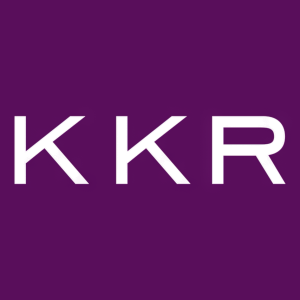KKR Releases “Labor in Transition”
KKR has released a new macro report titled Labor in Transition, authored by CIO Henry McVey. It examines how significant labor market shifts are elevating inflation rates, shifting capital allocation strategies. Key findings include the U.S. labor market being the tightest in 50 years, with a likely permanent shortfall of 2.1 million workers. The report forecasts a 2022 U.S. CPI of 6.0%, up from 5.0%, and a 10-year rate target of 2.25%. KKR advises investors to lean into inflation-protected assets and emphasizes tilting towards value rather than growth in public equities.
- Forecasting a 6.0% increase in U.S. CPI for 2022, indicating strong inflationary trends.
- Tight labor market conditions suggest persistent inflation, benefiting inflation-protected assets.
- Strategic recommendation to focus on real estate and infrastructure investments.
- The U.S. labor market is experiencing a significant shortfall, with a potential permanent erosion of 2.1 million workers.
- Real wages fell 50 basis points in 2021, impacting consumer purchasing power.
New Macro Report Highlights How Current Labor Market Trends are Rewriting the Narrative on Inflation and Creating a New Regime for Capital Allocators
“Even before the pandemic, our macro forecasts had been signaling that a structural shift in the
According to McVey and the GMAA team, the following workforce trends are driving the resting rate of inflation higher on a structural basis:
-
The
U.S. labor market is the tightest it has been in 50 years. Long-term demographic trends and pandemic-related disruptions, including a wave of early retirements, a pause on immigration flows, new challenges around family care and difficulties reintegrating discouraged workers into the workforce have all come together to create a significant and persistent labor shortfall. We estimate that 2.1 million of the total 3.9 million erosion in the labor force since 2019 may be more structural and permanent in nature. -
The workforce participation rate, which over the last three months has averaged
62.0% versus63.4% pre-pandemic, is unlikely to increase, we believe, as much as the Fed and employers are projecting. - Low-wage workers are now seeing the fastest increase in wages and, with many incentivized to change jobs frequently and command significant pay increases when they do, employee retention will likely become more difficult.
-
Despite the historic tightness of the labor market,
U.S. workers actually did not receive a real wage increase in 2021 because of inflation. In fact, real wages fell 50 basis points in 2021. However, we do think that they will get one in coming years, particularly in the low income segments of the market. -
Many
U.S. employers abruptly laid off employees early in the pandemic, which has made rehiring more difficult in many instances. By comparison, our work shows that Europe’s approach of furloughing employees has resulted in higher labor force participation rates than in theU.S.
These employment trends have firmed the team’s conviction in the magnitude and persistence of the inflationary impulses. As such, they are making the following changes:
-
Lifting their above consensus 2022 U.S. CPI forecast to
6.0% from5.0% , and their out-year CPI resting rate to2.5% from2.25% . Overall, their forecasts continue to embed a structural shift higher relative to the1.5% resting rate recorded during the mid-2010s. -
Raising their
U.S. 2022 10-year rate target to2.25% , from2.0% , to reflect their accelerated Fed expectations and moving their 2023 forecast to2.75% from2.5% to reflect higher sustained input costs, including wages.
Against this backdrop, the GMAA team highlights the following key takeaways for asset allocation:
- Lean into assets that provide protection against inflation, including real estate and infrastructure and incorporate more opportunistic strategies.
- Shorten duration in the fixed income market, as we still see most of the risk at the long end of the curve.
- Tilt more towards value over growth in public equity markets.
-
Increase non-
U.S. exposures, includingEurope andAsia , more so than in the past. - Focus more on productivity and pricing power across all asset classes.
Links to access this report in full as well as an archive of
- To read the latest Insights, click here.
- To download a PDF version, click here.
- For an archive of previous publications, please visit www.KKRInsights.com.
About
About KKR
KKR is a leading global investment firm that offers alternative asset management as well as capital markets and insurance solutions. KKR aims to generate attractive investment returns by following a patient and disciplined investment approach, employing world-class people, and supporting growth in its portfolio companies and communities. KKR sponsors investment funds that invest in private equity, credit and real assets and has strategic partners that manage hedge funds. KKR’s insurance subsidiaries offer retirement, life and reinsurance products under the management of The
The views expressed in the report and summarized herein are the personal views of
View source version on businesswire.com: https://www.businesswire.com/news/home/20220210005218/en/
212-750-8300
media@kkr.com
Source: KKR
FAQ
What did KKR's latest report by Henry McVey highlight about inflation rates?
How is the U.S. labor market affecting capital allocation according to KKR?
What are KKR's forecasts for the U.S. 10-year rate target?
What workforce trends are driving inflation according to KKR?







